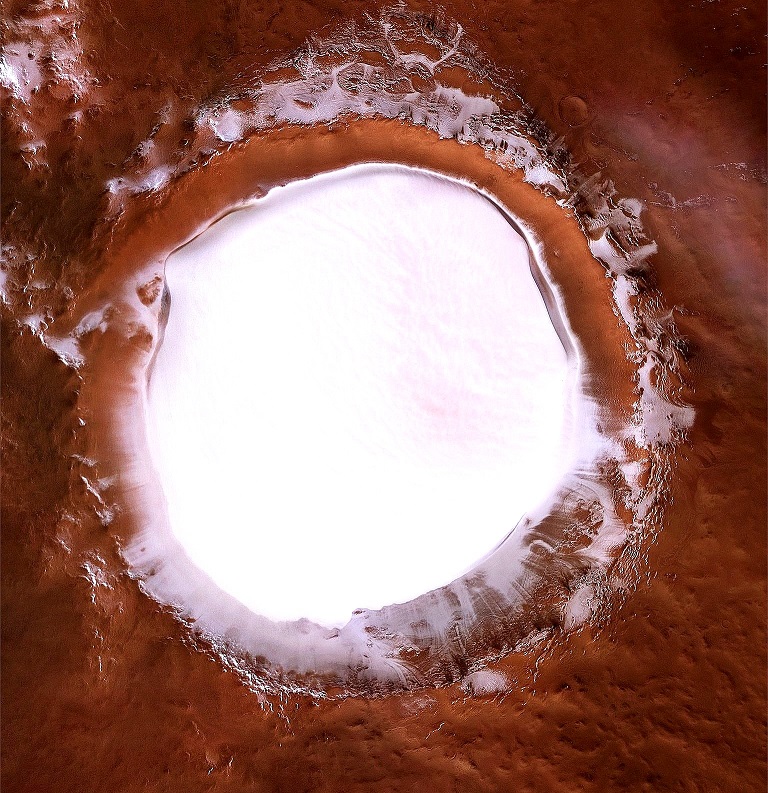Extreme Ice Climbing
Conrad Anker ice climbing (credit: National Parks Adventures)
Elite mountaineers hone their skills in many ways with ice climbing being one of the more advanced practices. Weather conditions and mountain locations must have the right conditions. It must be very cold for rock-solid ice to form the required vertical structures; the cliffs must produce an ice expanse large enough and long enough to challenge the climber; and an adequate way to escape a hazard when encountered need to be available.
Ice climbing 'rodeos' are appearing in some mountain towns provided these proper situations exist near by. The Ice Festival in Bozeman, Montana is one of the better known. Demonstrations of proper climbing techniques and cautionary procedures are part of such events with mountain athletes, such as international mountaineer Conrad Anker, offering their expertise and wisdom. If ice climbing were ever to happen on Mars, it would add 'out of this world' dimensions to the existing techniques.
NASA's Mars Reconnaissance Orbiter (MRO), with its powerful HiRise camera, has been circling the Red Planet for the past 17 years. The instrument, operated by the space lab at the University of Arizona, has been imaging Martian landscapes from every angle and lighting condition it has passed over. The resulting geographic maps have been scientifically significant and visually stunning by exposing rich details of the planet. Polar ice caps were known since the first modern telescopes peered at the planet but HiRise has provided considerable evidence that vast rivers, lakes, and potentially oceans once existed before disappearing early in the evolution of Mars. Some of this water evaporated in the thin Martian atmosphere but some still exists underground or may be buried under rock and dust covered glaciers.
The orbiting observatory previously imaged two locations where water ice was visible including an ice-filled crater and a meteor impact scar. Now, HiRise has seen the first example of solid cliff of ice in the mid-latitudes, ie. equatorial regions, of Mars.
According to the discovery's announcement, the massive ice cliff has been preserved because it faces away from the equator with its position shaded from the sun. Colored bands of ice are visible indicating layers which, not unlike tree rings, may have recorded different eras of Martian climatic environments. It is not known how long was required for the ice cliff to accumulate, but studies of the Martian polar ice caps suggest similar ice could be millions of years ancient.
Further investigations of this exciting discovery are planned but don't expect ice festivals or climbing demonstrations anytime soon. WHB


Meteor impact exposed ice and ice-filled crater, Mars (credit: NASA/HiRise/UA)

Exposed ice-cliffs on Mars (credit: NASA/HiRise/UA)